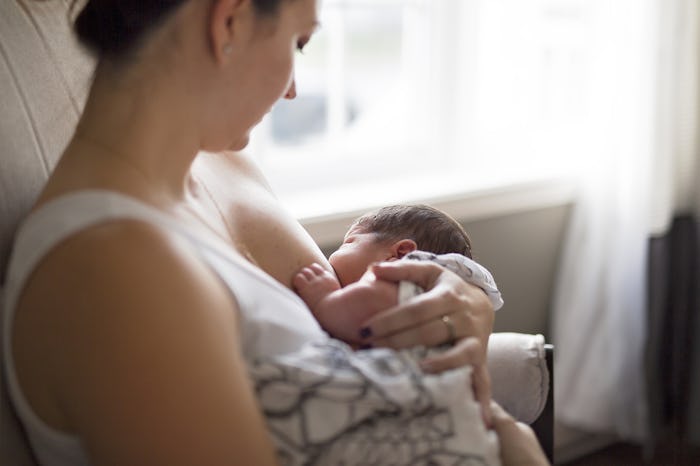Life
Early Humans May Have Survived Thanks To This Breastfeeding Trick, According To Science
During the last ice age, around 11,500 to 21,000 years ago, there were a lot of changes for all life on Earth that early humans had to survive. They did, and they eventually evolved into Homo sapiens. And new data says that early humans may have survived thanks to a breastfeeding trick, because human bodies are simply amazing machines, if you ask me.
A rare breastfeeding-related genetic mutation may have helped early human survive a chilling period and eventually complete the transition to becoming modern-day Homo sapiens, according to International Business Times. Evidence suggests that about 20,000 years ago, the genetic mutation increased the branching density of mammary ducts in the breasts. That result may have helped mothers to provide more fat and vitamin D to their babies in places where lower levels of ultraviolet radiation made it harder to produce vitamin D in the skin, according to EurekAlert!, an online science news source sponsored by the American Association for the Advancement of Science (AAAS).
Native Americans and East Asians in particular would have witnessed very low levels of sun’s ultraviolet radiation, and the mutation may have lead to another body change that researchers noted in those populations today. Which just goes to show you that science can be pretty wild.
The genetic mutation in East Asians and Native Americans also affected the shape of their teeth, according to Phys.org. Scientists have long been confused and curious about the evolutionary adaptation behind shovel-shaped incisors, which is a common tooth trait of northern Asians and Native Americans, according to ScienceDaily. Shovel-shaped incisors are teeth that have ridges along the sides and biting edge, according to International Business Times. It's a notable trait that has generally only been found in people belonging to the aforementioned two groups.
The gene controlling mammary duct growth also impacts the shape of human incisors, according to Scienmag. And after studying population records, Leslea Hlusko, an associate professor of integrative biology at the University of California, Berkeley behind the study, and her colleagues found that almost 100 percent of early Native Americans and 40 percent of modern-day East Asians all had shovel-shaped incisors, International Business Times reported. After gathering data, Hlusko and the team used the genetic effect associated with the tooth variation to understand the evolution of mammary glands during the last ice age, some 20,000 years ago.
The study, “Environmental selection during the last ice age on the mother-to-infant transmission of vitamin D and fatty acids through breast milk”, was published on April 23 in Proceedings of the National Academy of Sciences. In a statement, Hlusko said of the connection between the traits, according to EurkAlert:
People have long thought that this shoveling pattern is so strong that there must have been evolutionary selection favoring the trait, but why would there be such strong selection on the shape of your incisors? When you have shared genetic effects across the body, selection for one trait will result in everything else going along for the ride.
I wouldn't have thought that the gene that controls mammary duct growth also affects the shape of teeth, but I guess that's what we've got scientists trained in these areas for — to explain these weird and wonderful quirks of the human body.
The theory seems to come down to the spread of the breast-related genetic mutation, and whether it's due to selection for increased mammary ductal branching. If so, the adaptation would be the first evidence of selection on the maternal-infant bond in humans, EurekAlert! noted. Hlusko said these genetic mutations were incredibly important in helping those early humans survive a tough period, and they eventually led to all of us being here today. She said, according to the International Business Times:
This highlights the importance of the mother-infant relationship and how essential it has been for human survival.
So we can all thank the weirdness of genetics, and early breastfeeding mamas being able to do amazing things to get their babies the vitamins they needed, for our survival. No big deal. Just the whole of current human existence.
Check out Romper's new video series, Bearing The Motherload, where disagreeing parents from different sides of an issue sit down with a mediator and talk about how to support (and not judge) each other’s parenting perspectives. New episodes air Mondays on Facebook.
